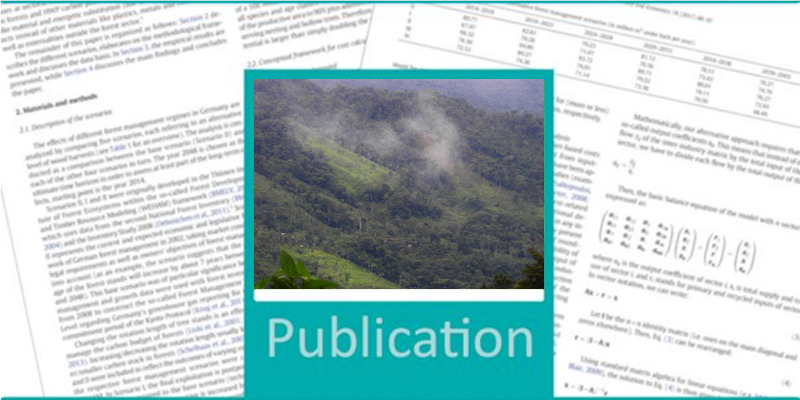The research was conducted in 12 landscapes located in the tropical lowland rainforests of the Central Amazon (eight landscapes) and the Northern Coast (four landscapes) of Ecuador. In six landscapes a conservation program is present; in the Central Amazon, the incentive-based forest conservation program Socio Bosque is present in four sites, while in the Northern Coast, protected areas are established in two sites.
The results for the Northern Coast revealed that deforestation significantly increased short term forest income. This can hardly be compensated by conservation incentives. Farmers close to protected areas generated less forest revenues but higher agricultural income. Indigenous farmers continued producing high forest income on private forest remnants, but not necessarily in a sustainable way.
In the Central Amazon, neither conservation nor deforestation had an economic effect on livelihoods. Indigenous farmers close to Socio Bosque had higher agricultural income, suggesting that such conservation areas can promote agricultural intensification.
With native forests at the Ecuadorian Northern Coast being largely depleted, the pressure on forest resources in the Amazon is expected to increase soon. Lessons learned from the Coast show that conservation areas must be timely installed. Simultaneously, income alternatives are needed; these include sustainable agricultural techniques and market access for agricultural products. Land use planning can help to avoid land clearing triggered by agricultural expansion. The potential of off farm income reducing pressure on forests should be kept in mind.
- Ojeda Luna T, Zhunusova E, Günter S, Dieter M (2020) Measuring forest and agricultural income in the Ecuadorian lowland rainforest frontiers: Do deforestation and conservation strategies matter? Forest Pol Econ 111:102034, DOI:10.1016/j.forpol.2019.102034
- Project brief (EN) 2020/05a · Tatiana Ojeda Luna et al.
- Project brief (ES) 2020/05 · Tatiana Ojeda Luna et al.








